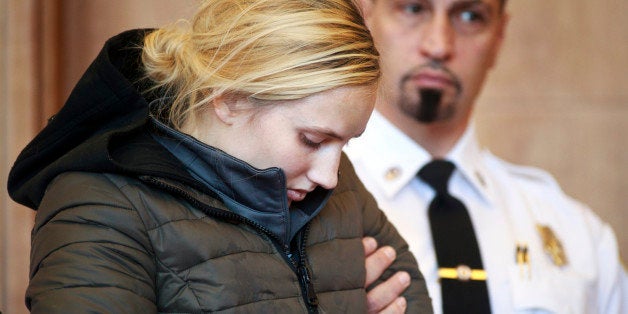
The case of Abigail Hanna--the pretty, blonde 21-year-old who allegedly kidnapped a toddler she once cared for before shaving her head, burning her with cigarettes, and leaving her by the side of the road some eight miles from her home--has the media fascinated, and it's easy to understand why: It's a dramatic, made-for-TV sort of case featuring a small child who endured horrific torture allegedly at the hands of someone who had once been charged with keeping her safe.
That Hanna was a bright, beautiful--and, it must be said, white--college student seems to have amplified the appeal and turned the story into international news, with everyone asking, in one way or another, how someone with so much potential can commit such a heinous crime. How can someone like her become, as the Daily Beast calls her, "the babysitter from hell"?
Except criminals come in all shapes, sizes, colors, and backgrounds. So, of course, do the mentally ill.
Indeed, it appears that Hanna--who was arrested on multiple charges, including kidnapping, assault and battery on a child, and breaking and entering at night--may suffer from severe mental illness. Earlier this week, when she appeared in court for her arraignment, she could not stand without assistance and appeared vacant-eyed.
A court clinician who had examined her testified that Hanna "was unable to present a factual understanding of the charges or even understanding of where she was that was completely logical." Hanna also expressed suicidal ideation and was experiencing "multiple psychotic symptoms including auditory hallucinations."
According to the National Alliance on Mental Illness, 61.5 million Americans suffer from mental illness in any given year, while the CDC reports that just over a third of people with severe depression had been to see a mental health professional within the previous year.
Mental illness is highly common and exceedingly undertreated. And yet in searching for Hanna's motive--some explanation for why the blond, blue-eyed girl with so much going for her would do such a thing--the media seems to have underestimated the power of mental illness.
At the very least, there seems to be an insistence on fixating on the qualities that seem to make Hanna's crime--and, perhaps, her mental illness--so unbelievable, posting photo after photo of the young woman in happier times. As the Daily Beast writes, "it's unclear why Hanna, a newly engaged former camp counselor, would snatch and abuse her former client." Her Facebook photos, after all, show her "beaming with friends, picking apples, and stirring coffee."
As if mentally ill people don't pick apples.
Here's the thing about mental illness, the thing we too often forget when looking for answers to the why and the how: Mental illness acts without prejudice and motive. And, very often, it acts without fair warning. It can be maddening to try to figure out why a person suffering from mental illness acts as she does, and there can often be no answers. While there can be a trigger to a psychotic break, that's not always the case. While a mentally ill person committing a crime can have motive to do so, that's also not always the case. The fact is that there's so much, too much, we don't understand about mental illness.
Some reports note that Hanna suffered a miscarriage not long ago. Another headline introduces the idea that she was an avid pot smoker, as if that explains anything. She was, reports say, a frequent shoplifter.
Hanna was also, reportedly, recently engaged, and the question has been implied: How could someone "normal" enough to have a fiancé commit such a horrific crime? Didn't he--didn't anyone--see this coming? He may have; we haven't heard from him. But holding anyone else but Hanna accountable is to ignore the very quality that can make mental illness so tragic: its unpredictably. What's more, to wonder how Hanna could have had a fiancé is to imply that mentally ill people can't be loved. They can, and they are.
This isn't to say Hanna should not be held accountable for her actions. If she is ill, she deserves help, and, if she was aware she needed help, it's truly a tragedy that she didn't seek it earlier. But it's a disservice to those suffering from mental illness to continue looking at these cases as if they are explainable; as if there must be reason for every action. For many people who suffer from mental illness, there is no explanation or cause or sense.
As one criminologist examining Hanna's case put it, "This is a crime that is totally nonsensical." The same could be said about mental illness in general. The problem is that we don't say it nearly enough.